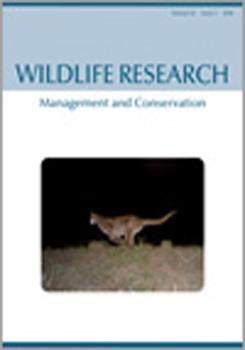Context. Livestock predation is a worldwide phenomenon, causing financial losses and emotional strain on producers. Wild dogs (Canis familiaris) cause millions of dollars of damage to cattle, sheep and goat production in Australia every year, and despite on-going control (baiting, trapping, shooting, and fencing), they remain a significant problem for livestock producers across many pastoral and agricultural regions of Australia.
Aims. We aimed to quantify the uptake of dried meat baits by wild dogs and determine whether an olfactory lure (fish oil) could increase uptake.
Methods. Camera traps and sand pads were used to monitor bait uptake for three baiting events on two pastoral properties in the southern rangelands of Western Australia in 2016 and 2017.
Key results. Of the 337 monitored baits with a known outcome, young wild dogs (<8 months old) removed only four, three of which were covered in a fish-oil lure. In warmer months, baits were largely consumed by varanids, and in cooler months, when baits were taken it was predominantly by corvids. Varanids and corvids took more baits than expected on the basis of activity indices. Kangaroos, feral cats and wild dogs consumed significantly fewer baits than expected from their activity on camera.
Conclusions. We have no evidence that adult wild dogs removed baits, despite many opportunities to do so (wild dogs passing cameras), and fewer wild dogs took baits than expected on the basis of activity events seen on camera. Olfactory lures may have the potential to increase bait uptake by naïve individuals (i.e. young dogs), but the sample size was small.
Implications. Increasing the number of baiting events per year, trialling novel baits, and baiting during low non-target activity are some of the recommended methods that may increase bait persistence and uptake by wild dogs.






